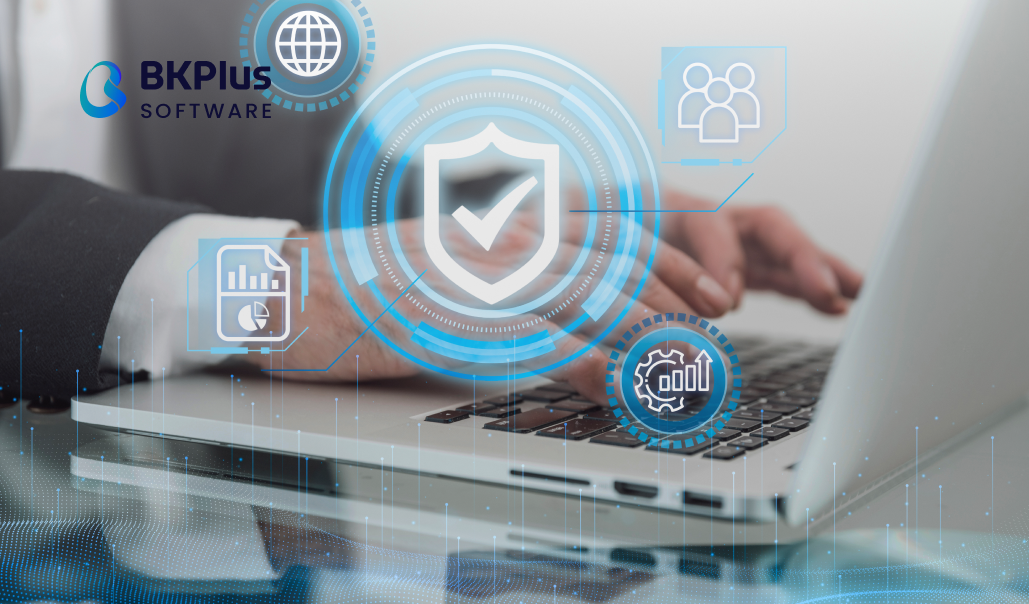In today’s hyper-connected digital landscape, where data breaches and cyberattacks are becoming increasingly sophisticated, the importance of security testing cannot be overstated. Organizations across the globe are investing heavily in robust security measures to protect their sensitive data, maintain customer trust, and comply with regulatory requirements. But what exactly is security testing, and why is it so critical in today’s digital age?
This comprehensive guide will explore the significance of security testing, the various types of security testing, and how to test security effectively. We’ll also delve into the role of a security testing tool in safeguarding your digital assets. By the end of this article, you’ll have a clear understanding of why security testing is a non-negotiable aspect of modern software development and how you can implement it to fortify your systems.
What is Security Testing?
Security testing is a process designed to identify vulnerabilities, threats, and risks in a software application or system. It ensures that the system is secure from potential attacks and that sensitive data is protected from unauthorized access. The primary goal of security testing is to uncover weaknesses before malicious actors can exploit them, thereby preventing data breaches, financial losses, and reputational damage.
Security testing is not a one-time activity but an ongoing process that should be integrated into every stage of the software development lifecycle (SDLC). From the initial design phase to post-deployment maintenance, security testing plays a pivotal role in ensuring the integrity, confidentiality, and availability of your systems.
Why is Security Testing Important?
1. Protecting Sensitive Data
In an era where data is the new oil, protecting sensitive information such as customer details, financial records, and intellectual property is paramount. A single data breach can result in significant financial losses and irreparable damage to your brand’s reputation. Security testing helps identify vulnerabilities that could be exploited to access this data, allowing you to address them proactively.
2. Compliance with Regulations
Many industries are subject to strict regulatory requirements, such as GDPR, HIPAA, and PCI-DSS. These regulations mandate that organizations implement robust security measures to protect user data. Security testing ensures that your systems comply with these standards, helping you avoid hefty fines and legal repercussions.

3. Preventing Financial Losses
Cyberattacks can result in direct financial losses through theft, fraud, or ransomware. Additionally, the cost of recovering from a breach—such as investigating the incident, notifying affected parties, and restoring systems—can be astronomical. Security testing minimizes the risk of such incidents, saving your organization time and money.
4. Maintaining Customer Trust
Customers are more likely to engage with businesses they trust. A security breach can shatter this trust, leading to a loss of customers and revenue. By conducting regular security testing, you demonstrate your commitment to safeguarding customer data, thereby fostering trust and loyalty.
5. Ensuring Business Continuity
A successful cyberattack can disrupt your operations, leading to downtime and lost productivity. Security testing helps ensure that your systems are resilient and can withstand potential threats, ensuring uninterrupted business continuity.
Types of Security Testing
Security testing encompasses a variety of techniques and methodologies, each designed to address specific aspects of security. Below are the most common types of security testing:
1. Vulnerability Scanning
Vulnerability scanning involves using automated tools to identify known vulnerabilities in a system. This type of testing is typically performed regularly to ensure that new vulnerabilities are detected and addressed promptly.
2. Penetration Testing
Penetration testing, or pen testing, simulates real-world attacks on a system to identify exploitable vulnerabilities. It can be conducted manually or using automated tools and provides valuable insights into how an attacker might compromise your system.
3. Security Code Review
This involves examining the source code of an application to identify security flaws. Security code reviews can be performed manually or using automated tools and are particularly useful for detecting issues such as insecure coding practices and hardcoded credentials.
4. Configuration Testing
Configuration testing focuses on ensuring that the system’s configuration settings are secure. Misconfigurations, such as open ports or weak passwords, can create vulnerabilities that attackers can exploit.
5. Risk Assessment
Risk assessment involves identifying potential risks to the system and evaluating their impact. This type of testing helps prioritize security efforts by focusing on the most critical risks.
6. Security Audits
Security audits are comprehensive reviews of an organization’s security policies, procedures, and controls. They help ensure that the organization is adhering to best practices and regulatory requirements.
7. Ethical Hacking
Ethical hacking involves authorized attempts to breach a system’s security to identify vulnerabilities. Unlike malicious hackers, ethical hackers work with the organization to improve its security posture.
How to Test Security: A Step-by-Step Guide
Now that we’ve covered the types of security testing, let’s dive into how to test security effectively. Follow these steps to ensure a thorough and comprehensive security testing process:
Step 1: Define Objectives and Scope
Before beginning security testing, it’s essential to define the objectives and scope of the test. What are you trying to achieve? Which systems or applications will be tested? Clearly outlining these parameters ensures that the testing process is focused and effective.
Step 2: Choose the Right Security Testing Tools
Selecting the appropriate security testing tool is crucial for achieving accurate and reliable results. There are numerous tools available, each designed for specific types of testing. Some popular options include:
- Nessus for vulnerability scanning
- Metasploit for penetration testing
- Burp Suite for web application security testing
- OWASP ZAP for identifying security vulnerabilities in web apps
Step 3: Conduct Vulnerability Scanning
Use automated tools to scan your systems for known vulnerabilities. This step provides a baseline understanding of your system’s security posture and helps identify low-hanging fruit that attackers might exploit.
Step 4: Perform Penetration Testing
Simulate real-world attacks to identify exploitable vulnerabilities. Penetration testing should be conducted by experienced professionals who can think like attackers and uncover hidden weaknesses.
Step 5: Review and Analyze Results
Once the testing is complete, review the results to identify vulnerabilities and assess their impact. Prioritize the most critical issues and develop a plan to address them.

Step 6: Implement Fixes and Retest
Address the identified vulnerabilities and retest the system to ensure that the fixes are effective. This step is crucial for closing security gaps and preventing future breaches.
Step 7: Document and Report
Document the entire testing process, including the vulnerabilities identified, the fixes implemented, and the results of retesting. This documentation serves as a valuable resource for future security efforts and helps demonstrate compliance with regulatory requirements.
The Role of Security Testing Tools
A security testing tool is an essential component of any security testing strategy. These tools automate the process of identifying vulnerabilities, making it faster and more efficient. They also provide detailed reports that help organizations understand their security posture and take corrective action.
When choosing a security testing tool, consider factors such as ease of use, compatibility with your systems, and the types of vulnerabilities it can detect. Investing in the right tool can significantly enhance your security testing efforts and provide peace of mind.
Best Practices for Effective Security Testing
To maximize the effectiveness of your security testing efforts, follow these best practices:
- Integrate Security Testing into the SDLC: Security testing should be an integral part of the software development lifecycle, not an afterthought.
- Stay Updated on Threats: Cyber threats are constantly evolving, so it’s essential to stay informed about the latest vulnerabilities and attack techniques.
- Train Your Team: Ensure that your team is well-trained in security testing methodologies and tools.
- Conduct Regular Testing: Security testing should be conducted regularly to identify and address new vulnerabilities.
- Collaborate with Experts: Partnering with security experts can provide valuable insights and enhance your testing efforts.
Conclusion
In an era where cyber threats grow more sophisticated by the day, security testing has transitioned from a luxury to an absolute necessity. By proactively identifying and addressing vulnerabilities, organizations can safeguard sensitive data, meet regulatory standards, and preserve customer trust. This guide has equipped you with a comprehensive understanding of security testing—from its various types to effective implementation strategies. Armed with the right tools and best practices, you can fortify your systems and outpace cybercriminals.
The time to act is now. Don’t wait for a breach to expose your weaknesses. Prioritize security testing today to protect your digital assets and ensure uninterrupted business operations. At BKPlus Software, we deliver tailored, cutting-edge security testing solutions designed to meet your unique challenges. Reach out to us today and take the first step toward building a secure, resilient digital infrastructure.



